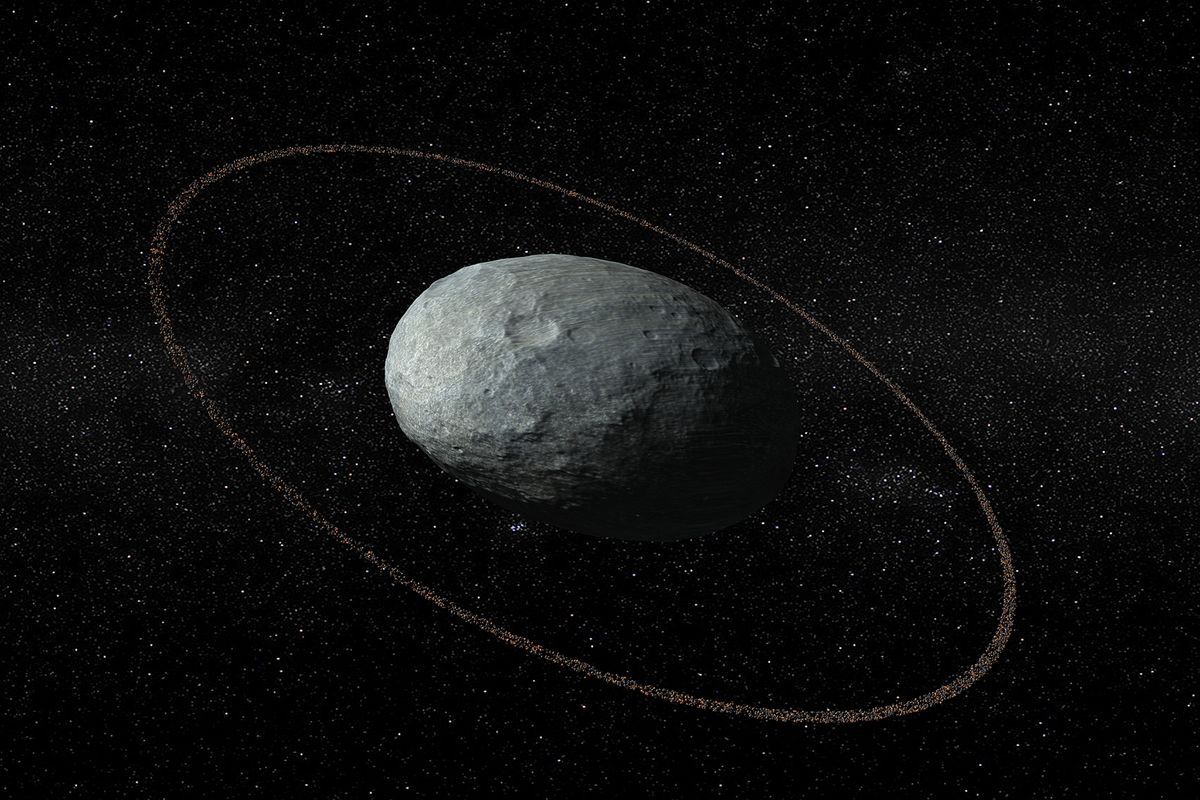An egg-shaped dwarf planet comes in discovery by the researchers; the name of the planet is Haumea. The scientists discovered that this little planet circle the sun from after the orbit of Neptune, and this planet has a ring which is 43 miles in width. In our solar system, it’s for the third time researchers have found a ring around an object which is not a planet, that’s too in just a few years.
Though rings are not unusual in the space, as Saturn, Jupiter, Uranus, and Neptune have the rings, which are present around the planets. This study published in the journal ‘Nature.’ An astronomer at MIT and the South African Astronomical Observatory in Cape Town, named Amanda Sickafoose said that rings in the outer solar system are not unusual. Also, we can foresee further ring-related findings shortly.
The ring around the Haumea dwarf planet was discovered by an international team of astronomers. The team found about the ring while working on the continuous program to distinguish Trans-Neptunian Objects and also the things which are far away from the sun than Neptune as these small objects are situated so far, these are difficult to watch with most advanced telescopes.
Jose Ortiz from the Institute of Astrophysics of Andalusia in Spain, who directed the research said that even with the biggest telescopes on Earth, the Haumea planet is only visible as a dot of light. Also, even with the Hubble Space Telescope, the dwarf planet is not visible clearly.
Meanwhile, there are other ways to gather the vital information about the objects which are present at a striking distance. Ortiz and his team used a stellar occultation technique to learn about the Trans-Neptunian Objects properly. This method works by measuring minute changes in the sum of light; the light star gives when an object crosses in front of it. With the measures, researchers can determine the object’s shape, size and amount of light the object reflects. Also, to find out that if there is an atmosphere or whether the object has rings or not.
The authors of the study were dependent on the data collected by twelve telescopes which are located in Hungary, Slovenia, Germany, Slovakia, Italy and the Czech Republic. From all of these locations, small fall in starlight was recorded at the both ends of the event when Hamumea briefly blocked a star. Scientists reported that the event also gives proof that from around 600 miles from its surface the dwarf planet is enclosed by a ring of material. Also, the authors were capable of concluding the fact that Haumea’s rings are considerably darker than its surface.
Therefore, the rings make the dwarf planet worth observing as it doesn’t look odd like other features of Haumea. Let’s wait for the point when the space agencies will comment on the news.
